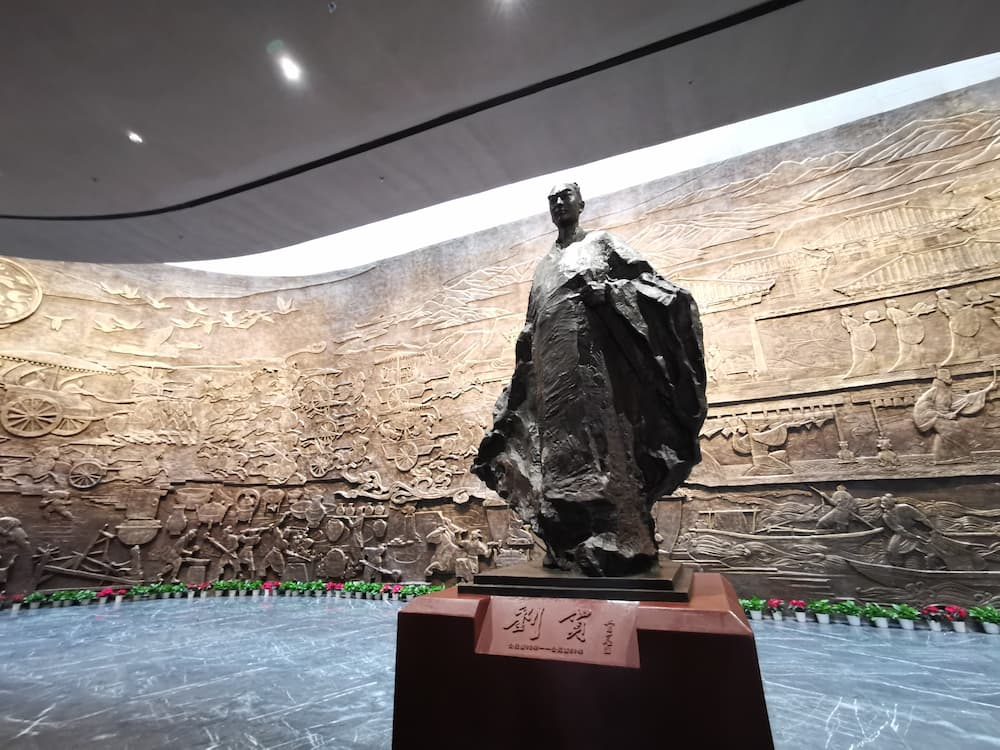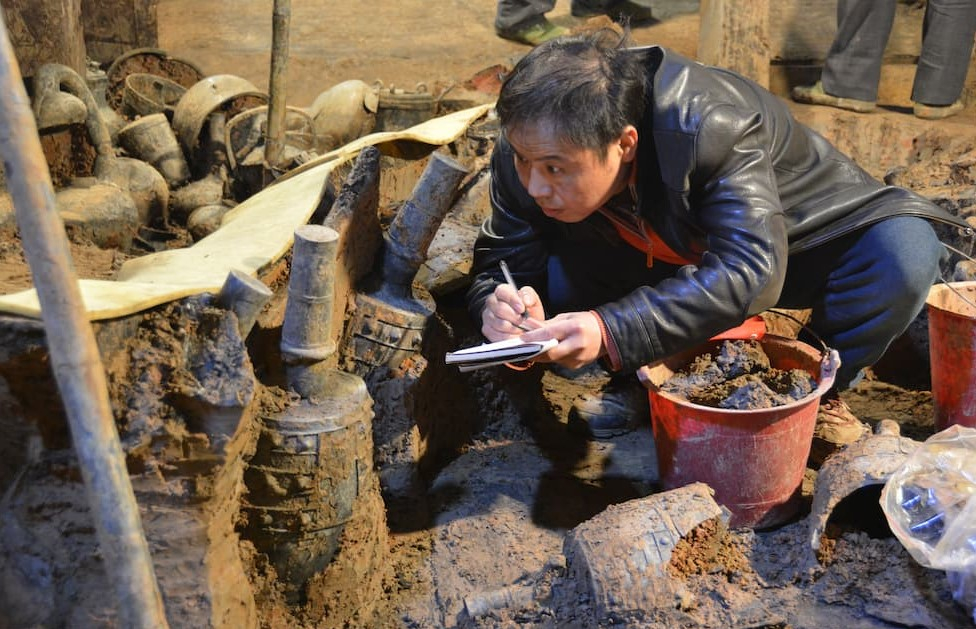
The Timeless Tomb of the Marquis of Haihun
Splendid
Chi Culture
Topic
Archaeological Marvel of the Century — The Timeless Tomb of the Marquis of Haihun
Liu He, the Marquis of Haihun during the time of the Western Han dynasty (西漢), led an extraordinary life and experienced various roles including regional prince, emperor, commoner, and marquis. He continued to make headlines when archaeologists discovered his tomb more than 2,000 years after his death, making it one of the significant archaeological discoveries in China. Why did Liu experience so many ups and downs in his life? What important discoveries did archaeologists uncovered in his tomb?
Liu He was the grandson of Liu Che (劉徹), Emperor Wu of the Han dynasty (漢武帝), and the son of Emperor Wu’s fifth son Liu Bo (劉髆), who was granted the title of Prince of Changyi (昌邑王). The six-year-old Liu He succeeded his father’s title after his death. When Liu He turned 19, Emperor Zhao (漢昭帝) passed away. He was chosen by Huo Guang (霍光), the powerful minister overseeing government affairs, to succeed the throne. However, he served as emperor for only 27 days before Huo deposed him under the accusation of debauchery and lack of etiquette. Overnight, Liu He went from being an emperor to being a commoner. He returned to his previous residence in Changyi. When Liu He was 29, Emperor Xuan (漢宣帝) granted him the title of Marquis of Haihun, with his fiefdom located around the present-day Nanchang area. After a four-year tenure as Marquis of Haihun, Liu He passed away at the age of 33. The historical records contain little details about his brief reign as emperor for just 27 days, resulting in limited knowledge about him among later generations.
On a night in March 2011, villagers from Guanxi Village (觀西村) in Xinjian District (新建區), Nanchang, Jiangxi Province (江西), noticed suspicious individuals digging near the Guodun Mountain (墎墩山). The incident led to the rediscovery of the Tomb of the Marquis of Haihun buried in this mountain. The abundance of cultural artefacts contained in the 2,000-year-old tomb astonished the archaeologists, making this ancient Western Han dynasty tomb a significant archaeological discovery in China. The tomb complex consists of two main tombs, seven attendant tombs, and an outer storage pit, spanning an area of approximately 46,000 square meters. Since the skeletal remains of the tomb’s occupant had decomposed, archaeologists were initially unable to identify the tomb’s owner. However, a jade seal engraved with the characters “Liu He” was eventually found in the main coffin, confirming Liu as the tomb owner. Archaeologists sought to uncover details of Liu’s life journey, including the cause of his death, and the hidden messages behind the cultural relics in the tomb.
Archaeologists discovered over 10,000 burial artefacts in this tomb, encompassing coins, objects of gold, bronze, jade and iron, as well as lacquered wooden items, ceramics, textiles, bamboo and straw weavings, and bamboo and wooden slips. Weighing a total of 120 kilograms, the gold objects unearthed are the largest amount of their kind ever found in a Han dynasty tomb. There were also approximately 4 million Wuzhu coins (五銖錢), weighing ten tons and piling up like a mountain. It took around four to five archaeologists a month to clean the mud off this remarkable amount of coins, and one archaeologist spent half a year counting them.
In the eyes of archaeologists, the most valuable artefacts, on par with the gold objects and coins, are the more than 5,000 bamboo and wooden slips found in the tomb. These slips primarily contain Confucian classics, memorials Liu He wrote to the emperor, and imperial edicts issued by the emperor after Liu’s death that his family members were demoted to commoners. Among them are contents of Liu’s request to Emperor Xuan, asking to return to the capital of Chang’an (長安) to pay respects to his ancestors. When Liu was granted the title of Marquis of Haihun, there was a restriction prohibited him from returning to the capital to worship his ancestors. Furthermore, the slips revealed the lost content of the Qi Analects (Qi Lun Yu, 《齊論語》), which had been missing for over 1,800 years. This discovery contributed to the academic community a deeper understanding of the Confucian classics.
The unearthing of the Confucius garment mirror in the tomb also caused a sensation. The garment mirror is the main panel of a double-folded screen, depicting portraits of Confucius and his disciples along with inscriptions recounting their life stories. It is the earliest known image of Confucius to date, showing him in robes with a long beard, and having a relatively slim figure. It differed significantly from the commonly known image of Confucius today. The inscriptions on the mirror share many similarities with the content of the Records of the Grand Historian (Shi Ji, 《史記》) by Sima Qian (司馬遷), raising speculation among archaeologists about whether Sima Qian, the author of the Records of the Grand Historian, and the writer of this garment mirror might have referred to the same historical source. Recent findings indicate that many of the texts on the screen were in fact taken from Sima’s Records of the Grand Historian, making it the earliest physical evidence related to the Records of the Grand Historian that we have seen so far. The screen is of great importance for studying the history, politics, ideology, and the history of painting and craftsmanship during the middle and late Western Han dynasty.
Among the over 10,000 cultural artefacts, archaeologists discovered a bronze hot pot, igniting a hot debate within the archaeological community. Despite being over 2,100 years old, the bronze hot pot bears a resemblance to a contemporary hot pot, if smaller in size. Some scholars suggest it might have been a food warmer rather than a hot pot. Considering the Han dynasty dining culture involved separate individual meals, this artefact could have been a forerunner to the concept of “one person, one pot”.
The Tomb of the Marquis of Haihun is abundant in cultural artefacts. According to Yang Jun (楊軍), a researcher from the Jiangxi Provincial Institute of Archaeology responsible for the excavation of the Tomb of the Marquis of Haihun, despite the diligent efforts of this generation of archaeologists, various mysteries surrounding this burial site remain unsolved. He believes it will take the collective efforts of several generations of archaeologists to fully unravel them.




